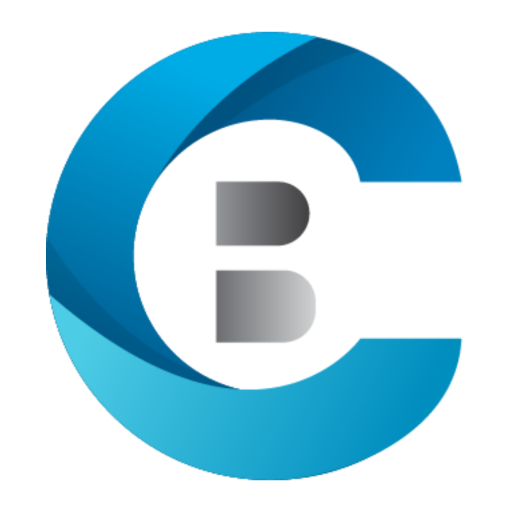8 Essential Features Your Sales Enablement Tool Should Have
Only 26% of sales representatives in 2022 achieved 90% or more of their quota. Considered the lifeblood of a firm, new sales revenue streams, that is not a very successful win rate. So, how can we enable our salespeople to successfully meet their sales quotas?
Introducing sales enablement tools is an easy solution.
You may teach your sales representatives how to successfully target new clients, handle challenging conversations, close more deals, and boost your business’s bottom line by using sales enablement tools.
Why are sales enablement tools crucial to your company’s success?
The capacity of sales enablement solutions to centralize knowledge between the marketing and sales divisions is one of their most potent advantages.
This creates a domino effect that promotes quota attainment, boosts income, and strengthens brand identity.
Sales income is impacted by streamlined procedures, winning tactics, and the development of winning seller behavior and abilities when knowledge, insights, and methods are accessible centrally by the sales and marketing departments.
Your company’s use of sales enablement technologies can:
With clear objectives, assignments, and knowledge sharing, align the sales and marketing teams. This is significant because 50% of teams believe that additional resources are required to complete enabling duties effectively.
Learn from top-performing sellers’ winning attitudes and techniques, then adapt those behaviors into techniques that other sellers may pick up and use.
Utilize content insights to optimize your materials for higher success rates.
accelerate the new hire onboarding ramp process. As a result, new workers are more prepared for success; 79% of businesses with good training achieve 100% of their sales quotas.
Keep sellers informed about new tactics, product introductions, and industry trends. In actuality, 90% of vendors who reach at least 75% of their quota take part in sales training monthly.
Monitor your KPIs and objectives. More than 71% of businesses with distinct sales KPIs achieve 100% of their sales quotas.
The advantages of using sales enablement technologies for your team
All of your sales processes become more straightforward, quantifiable, and actionable with the help of contemporary sales enablement technologies.
Centralise content access
Sales representatives can better utilize the content that is provided to them by using sales enablement technologies, which inform them of its availability.
Reps must locate pertinent sales materials as soon as possible to nurture leads, follow up with prospects, and persuade key decision-makers of the value of your products because only 10% of all content produced generates 50% of all customer engagement.
Forrester discovered that one of the main problems sales teams face is “not having the correct material.” Finding content and information, according to sellers, is a major productivity barrier that interferes with their daily work.
Your enablement team can tag content using a sales enablement technology to group it according to buyer personas, stages in the sales funnel, customer outcomes, or the stakeholder to whom it is most pertinent. This comprises:
- Case studies
- Whitepapers
- Sales playbooks
- Competitor comparisons
- Microlearning modules
- Training call recordings
Your salespeople may then quickly locate pertinent sales enablement content by searching for key content terms. This system provides sellers with the information and material they need to advance interactions with prospects, assisting them in increasing deal closure rates and win rates.
Collaboration between sales and marketing should be improved
According to a survey conducted by LinkedIn, 85% of respondents think that improved marketing and sales alignment would result in significant company development. Unfortunately, teams in sales and marketing frequently work in isolated silos with minimal interaction.
The alignment of these teams is improved by sales enablement, and the efficiency of their procedures is more clearly seen. Marketers may view how vendors employ promotional materials in their Get quantifiable information on the effects of various content types on the sales process through sales conversations.
Additionally, sellers can access the marketing team’s content and receive notifications when new case studies or product sheets are available for use in nurturing funnels.
Both teams may collaborate to boost overall sales success because they can observe which messaging, content, and strategies are effective.
Increasing team performance visibility
To help sellers develop the necessary abilities and expertise, sales enablement provides them with content, resources, and training materials.
Sales managers can view information on the success of their reps as well as details about how they use content and complete training.
This enables managers to comprehend how the information, tools, and training offered to the sales force impact its success.
Managers obtain insights on how to provide each team member with a data-informed and individualized approach to sales coaching programs by having access to data on how training content and exercises affect team performance.
You need these 8 features in a sales enablement solution.
The following are important elements that businesses looking for a sales enablement tool should consider.
- Insights and analytics
- Onboarding management
- Gamification
- Automated workflows
- Program management
- Content management
- Integrations
- Governance
1. Insights and analytics to optimize sales efforts
The majority of businesses invest a significant amount of time, money, and resources in training their sales teams. However, it is difficult to determine what is effective and which areas of the training process require improvement without a mechanism to quantify these efforts.
You can learn what works, what doesn’t, and how to get better with the help of sales enablement tools.
You can use data and insights from your sales enablement platform to make data-driven decisions to enhance sales initiatives or help individual reps develop a particular skill.
Managers, for instance, can assess a sales representative’s effectiveness in a crucial area, like closing. The manager monitors the closure rate and other closing-related KPIs to see how the rep’s performance changes following training sessions and one-on-one sales coaching intended to enhance closing abilities. The management can change the training program based on those quantifiable results.
The time and money spent on training each sales professional are also displayed by sales enablement tools. Managers can take action to reduce inefficiencies and boost productivity if costs are higher than desired.
2. Onboarding management and accelerating ramp time
Sales enablement solutions assist in providing new sales personnel with the education and training necessary for them to be successful in their positions.
It can be difficult to maintain reps’ interest during the sales onboarding process, monitor their preparation, and give them simple access to forms, manuals, and other onboarding materials.
But adopting sales enablement technologies for onboarding benefits teams in the following ways:
Enhance learning and testing with automated training routes that let reps ramp up more quickly.
Keep reps fully engaged and frequently updated to ensure better communication, which will increase productivity and reduce turnover costs.
Improve coaching by utilizing the resources and information that enable representatives and managers to spot and address any areas, such as knowledge and abilities, that need to be improved to meet higher quotas.
3. Gamification to motivate sales reps
Maintaining sales reps’ interest throughout initial training and ongoing instruction is difficult.
Gamification can help with that.
Organizations can gamify mundane duties to make them fun activities that encourage and reward sales representatives to advance their careers.
By gamifying learning, managers can promote friendly rivalry, chunk learning into manageable chunks, provide pertinent games and quizzes, and include real-world scenarios.
Additionally, gamification can enhance social interaction during onboarding and training and encourage open dialogue among sales representatives.
Both rookie salespeople and seasoned salespeople who need to continually improve their knowledge and expertise might employ gamification during the onboarding process. It can help with ongoing training and skill-tuning in an enjoyable setting.
4. Automate workflows to streamline sales strategies
Organizations frequently struggle with responsibility and collaboration. Automated workflows not only make collaboration simple, but they also hold the correct individuals accountable.
For instance, you can establish a smooth feedback loop between managers and sales representatives using automated workflows. Here, sales managers who may provide qualitative and quantitative feedback receive automatically submitted audio or video recordings from sales representatives. This streamlines the learning process by getting rid of manual reminders and constant back and forth.
Managers and sales representatives can complete tasks quickly and through a centralized process that monitors progress with the aid of automated workflows.
5. Program management to reach strategic goals
Through tactical initiatives like sales onboarding programs or voice of the customer initiatives, program management aids sales teams in achieving their goals.
These initiatives involve several interconnected projects, and a project manager is in charge of keeping an eye on the team members who are assigned to various projects.
These initiatives are more extensive than the agreements that individual sellers are working on. Instead, they work with several groups, including leadership for strategic guidance, marketing for content development, and IT for technical implementation.
It can be challenging to manage and carry out these strategic goals without a program management function in your sales enablement application, which can have a detrimental effect on your sales enablement efforts.
However, program managers can reduce some of their stress by structuring programs, adding collaborators, managing those collaborators, producing and disseminating pertinent content, and automating communication with a program management feature.
6. Content management and centralized resources
Sales representatives rely on a range of information throughout the sales cycle to improve buyer engagement and comprehension.
The difficulty with all of this content is that it needs to be arranged properly to be found and used to its full potential.
The ability to control content makes it simple for sellers to rapidly access sales materials. By providing sellers with an easy-to-use and accessible content management system, you enable them to use the appropriate material at the appropriate stage of the sales process.
Additionally, allowing several authors to work together on a piece of content, whether it be a PowerPoint presentation, a PDF document, or a video, gives teams the ability to exchange knowledge and best practices.
An efficient sales enablement tool assists your team in monitoring content usage, provides information on the content that has the highest rate of engagement, and explains how to introduce and use content resources.
7. Integrations to facilitate organizational planning
New products are bought as sales enablement strategies change inside firms. Users may become overburdened as a result of the different platforms and logins.
Integrating fragmented systems with a sales enablement tool offers a consolidation approach.
Organizations may keep their communication, calendaring, CRM, reporting and business intelligence, content management, and other technologies in one place by using a sales enablement platform that enables integrations.
With the help of integrations, salespeople can spend more time selling and developing their skills and less time sifting through various platforms.
8. Governance to organize tasks and data insights
There are numerous moving pieces in sales enablement programs. You must therefore function with absolute trust that your company is making large-scale use of its resources securely and effectively.
You can configure various access levels across numerous user roles and locations using platform governance.
This makes it easier to define custom roles for people who require privileged access and to streamline coaching workflows and roll-up reports based on organizational hierarchy.
Click here to know more details
Click here for more Blogs


